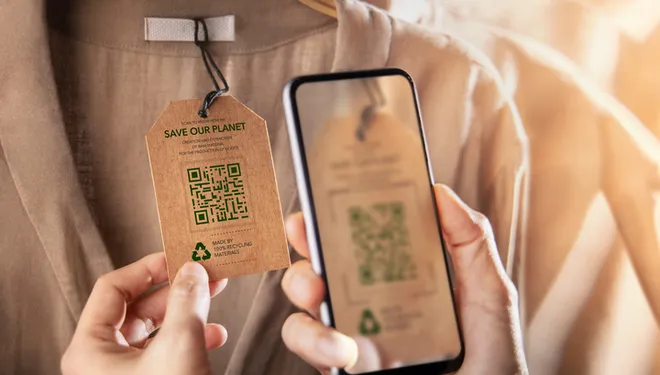Every purchase you make sends a message. In a world overwhelmed by mass production, plastic waste, and fast fashion, choosing to shop sustainably is more than just a trend—it’s a responsibility.
Sustainable shopping means considering the environmental and social impact of the products you buy. From the materials used to how they are packaged and transported, every step matters.
Tip 1: Choose Reusable Over Disposable
Opt for reusable alternatives to single-use products whenever possible.
| Disposable Item | Sustainable Alternative |
|---|---|
| Plastic bags | Cloth or jute tote bags |
| Bottled water | Stainless steel water bottle |
| Paper towels | Washable cloth towels |
| Plastic straws | Bamboo or metal straws |
Why it matters: Reduces landfill waste and cuts down on plastic production.
Try shopping with a “zero-waste kit” that includes a tote, reusable containers, and utensils.
Tip 2: Support Local and Small Businesses
Buying from local farmers, artisans, and independent stores:
- Reduces carbon emissions from long-distance transport
- Strengthens local economies
- Often supports ethical labor practices
Example: Instead of buying vegetables wrapped in plastic at the supermarket, visit a nearby farmer’s market or organic co-op.
For U.S. shoppers, you can find local organic markets through LocalHarvest.org.
Tip 3: Embrace Secondhand and Thrift Shopping
Fast fashion contributes to immense waste and unethical labor. By shopping secondhand, you:
- Keep usable items out of landfills
- Reduce demand for resource-intensive production
- Save money without compromising style
Great platforms to try:
“Buy less, choose well, make it last.” – Vivienne Westwood
Tip 4: Buy in Bulk to Cut Packaging Waste
Bulk shopping lets you avoid excess plastic packaging and often saves money.
What to buy in bulk:
- Grains, nuts, and seeds
- Spices
- Cleaning and personal care products (in refill stations)
Pro Tip: Bring your own glass jars, mesh bags, or containers to fill.
Tip 5: Check for Eco-Certifications
Look for labels that certify sustainability, including:
| Certification | What It Means |
|---|---|
| USDA Organic | Free from harmful pesticides |
| Fair Trade | Ethical wages and working conditions |
| FSC Certified | Responsibly sourced wood/paper |
| GOTS (Textiles) | Organic and sustainable fabric production |
These marks ensure the products meet specific environmental and ethical standards.
Tip 6: Avoid Impulse Buys and Plan Ahead
Impulse shopping often leads to buying things you don’t need, many of which end up unused or discarded.
How to shop mindfully:
- Make a list before you go
- Set a budget
- Ask yourself: “Will I use this long-term?”
- Use a “30-Day List” rule—wait 30 days before buying non-essential items
Tip 7: Choose Sustainable Materials
When buying clothing, home goods, or gifts, opt for natural, biodegradable, or recycled materials, such as:
- Organic cotton
- Bamboo
- Hemp
- Recycled polyester
- Cork
- Glass over plastic
These materials have a smaller ecological footprint compared to synthetics or virgin plastic.
Tip 8: Shop from Eco-Conscious Brands
Support brands that are transparent about:
- Carbon offsets
- Sustainable sourcing
- Minimal packaging
- Giving back to the planet
Eco-friendly brands to explore:
- Patagonia – ethical outdoor gear
- EarthHero – sustainable marketplace
- Package Free Shop – zero-waste essentials

Tip 9: Consider the Shipping Impact
Online shopping is convenient but can be wasteful due to:
- Excessive packaging
- Multiple delivery trips
- High carbon emissions
How to shop sustainably online:
- Choose slower, consolidated shipping
- Opt out of plastic packaging
- Bundle items in a single order
- Support carbon-neutral delivery options (many brands now offer this!)
Tip 10: Buy Less, But Better
At its core, sustainable shopping is about mindful consumption.
Instead of chasing deals or trends, invest in:
- Timeless items
- Durable, high-quality products
- Multi-use tools or clothing
- Repairable over replaceable items
Example: Choose a high-quality stainless steel razor over plastic disposables—it lasts years and reduces waste.
Quick Comparison Table: Sustainable vs. Unsustainable Shopping
| Aspect | Sustainable Shopping | Unsustainable Shopping |
|---|---|---|
| Materials | Natural, recycled, durable | Plastic, synthetic, fragile |
| Packaging | Minimal, compostable | Excessive, non-recyclable |
| Brands | Ethical, eco-certified | Mass production, unclear origins |
| Purpose | Intentional and necessary | Impulsive and wasteful |
Conclusion
Sustainable shopping isn’t about perfection—it’s about progress. Every eco-conscious decision, from refusing plastic bags to supporting local makers, builds momentum toward a greener, more equitable future.
“We don’t need a handful of people doing zero waste perfectly. We need millions doing it imperfectly.” – Anne-Marie Bonneau
Start small. Shop smarter. The planet will thank you.
Read More: Home Composting vs Industrial Composting: What’s the Difference?
FAQS
Not necessarily. While some eco-products cost more upfront, they often last longer—saving money over time. Shopping secondhand or in bulk also reduces costs.
Check for third-party certifications, transparency in sourcing, and whether the brand openly shares its sustainability practices.
Yes! Choose consolidated shipping, avoid returns, and support brands with carbon-neutral delivery options.


